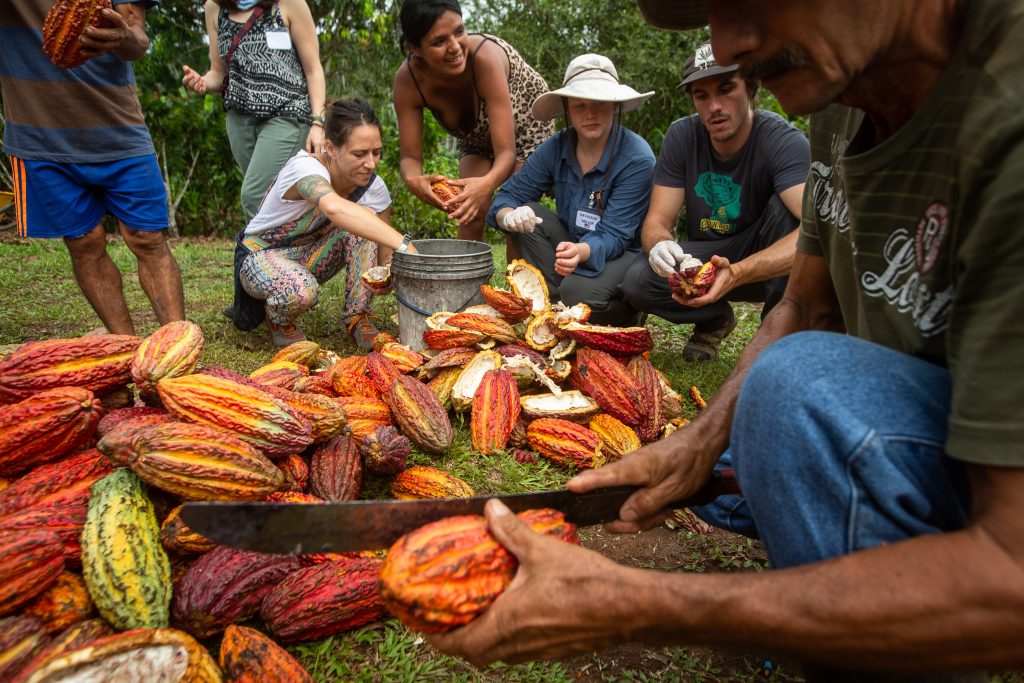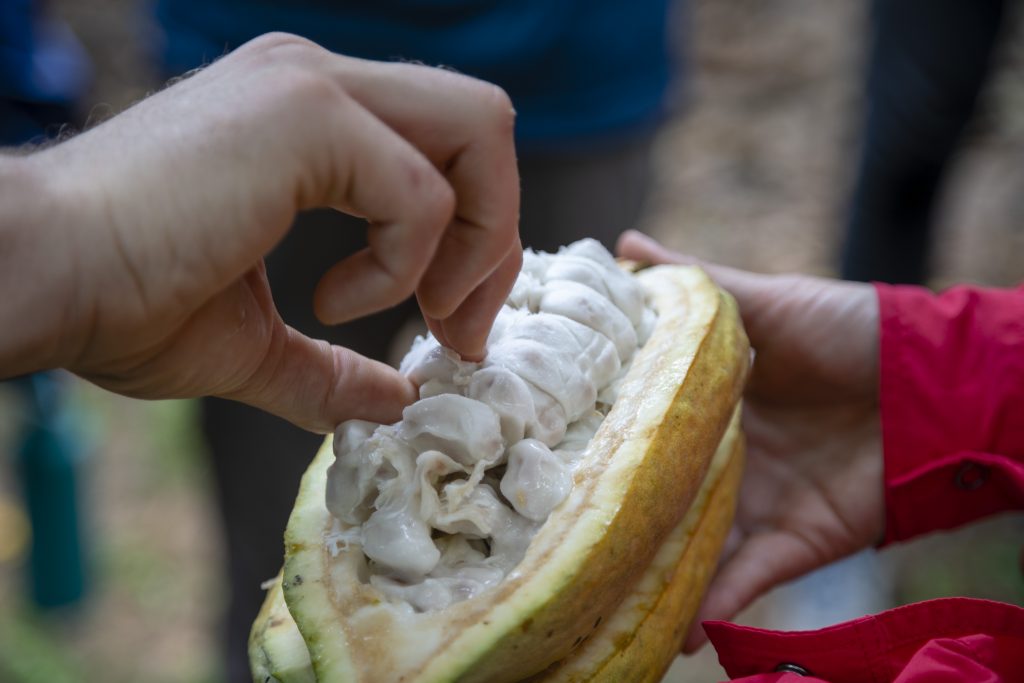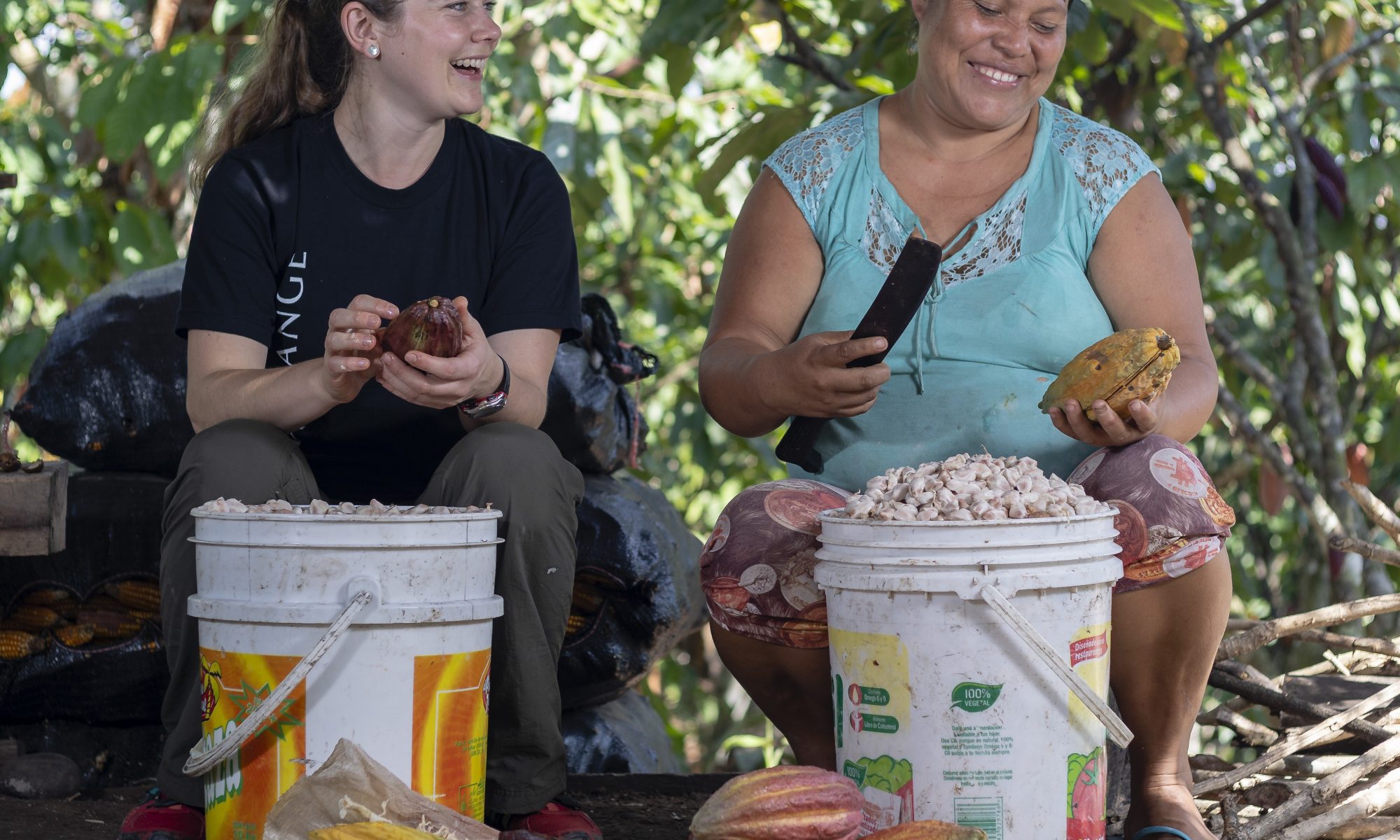Equal Exchange. The name is something many of us have become accustomed to, familiar as a stamp on our coffee bags, chocolate wrappers, and tea boxes. Corporate offices, congregations, and store shelves host items sporting the red, double-E logo, which has become a symbol of the worker-owned cooperative’s mission: “fairness to farmers.”
Familiar as it is, most of us don’t know the story of Equal Exchange. How are they forming a connection between producers and consumers? What does “fairness to farmers” actually mean?
Let’s start at the beginning.
In 1986, Jonathan Rosenthal, Michael Rozyne, and Rink Dickinson founded Equal Exchange. The trio, connected as managers of a New England food co-op, wanted to work with international farmers the way they were working with local farmers.
“They wanted to bridge those gaps that exist between producers and consumers… for international goods like coffee, tea, and cacao and working with farmers who need fair prices and equitable access,” explained Rachel Dana of Equal Exchange.
The founders’ movement towards changing how food was consumed internationally came at a pivotal time in the U.S. food industry:
“The U.S. public was beginning to see their nation’s family farms squeezed out and replaced by industrial-scale, corporate-run agribusinesses reliant on toxic chemical fertilizers, herbicides, and pesticides. As a result, consumer food co-ops who offered their members more organic and locally produced food grew in popularity,” wrote the cooperative.
At that same time, the U.S. specialty coffee market was exploding. So, Jonathan, Michael, and Rink chose coffee as their first fair trade good, starting with a Nicaraguan coffee they called ‘Café Nica.’ This coffee marked the first of many victories for Equal Exchange, the organization working loopholes around government embargos and gaining political support for their mission.
Over the past 35 years, Equal Exchange has become a big player in the world of fair trade.
By 1991, the organization had established itself as a Fair Trade specialty coffee company and started bringing in high-quality tea from a small farm in Sri Lanka. In 2001, they began exploring cocoa, introducing their first fair trade chocolate bars three years later.


This brings us back to the question: What does “fairness to farmers” mean?
“We’re trying to make these extremely exploitative industries of coffee, tea, and cacao less so,” Rachel said.
This ties into the principles of Fair Trade, described by Equal Exchange as a way of conducting business that aims to keep small farmers an active part of the world marketplace, empowering consumers to make purchases that support their values.
To hit these goals, which center around ethical practices, stabilizing small-scale farms, and equitable distributing financial gains, Equal Exchange is simplifying the supply chain, getting more money back to the farmers. They pay $2.20 per pound of coffee, significantly more than the Fair Trade minimum of $1.90 per pound. Rachel emphasizes that the organization firmly believes the current minimum is simply not enough.
Equal Exchange also puts efforts into working as cooperatively as possible, partnering only with farms organized democratically, not individual businesses or coffee estates.
Rachel tells the story of a coffee farm in Mexico that originally sold to Starbucks:
“Starbucks started to… basically tighten their grip, limiting control of operations for this group. These farmers realized that this wasn’t going to be sustainable long-term and ended their Starbucks partnership, then reached out to us.”
Creating and sustaining these long-term partnerships is something the Equal Exchange prides itself on.
They’ve helped one of their cocoa producers, Conacado in the Dominican Republic, develop a chocolate-tasting lab to help them control quality and advocate for themselves in the market. When crops in Guatemala were devastated by la roya (leaf rust), farmers knew Equal Exchange would come back and continue to build a partnership with them after the crops had recovered — they even offered producers a prefinanced line of credit.
“We’re not going to purchase whatever is new and shiny from [farmers] and then move on. We’re in it for the long haul,” Rachel said.
Businesses like Harvie, Rachel says, are the exact kind of partnerships the organization is looking for to support their farmers. Cooperative stores, food hubs, and clubs play a key role in the food system and have been Equal Exchange’s “bread and butter” for so long; Harvie is a perfect fit.
“I’m honestly honored that Harvie reached out to us, that you wanted to partner with us. This is what we want,” she said.
Equal Exchange chocolate bars, chocolate chips, organic teas, dried mango, and toasted cashews are available on Harvie — add a mix of their Fair Trade goods to your next delivery!
Interested in more stories like this? Join Harvie’s email list!

